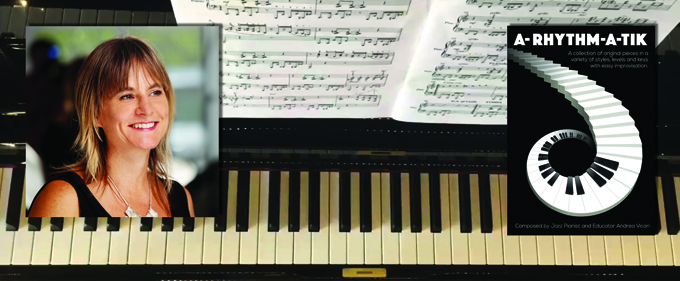"A number of years ago I had students who had been learning for several years and who were interested in playing many styles of music. Having taught piano (mostly classical and jazz) I noticed much of the jazz music being sold was either very basic for beginners or often very complicated with either solos written out or the pianist expected to solo over quite complex chord sequences. I also found a lack of stimulating material for non-classical music. As a result I started composing tunes in a jazz style that I felt reflected the more contemporary side of the music with a strong emphasis on rhythm and coordination; all skills I consider extremely important for a pianist. Soons I found I had written 26 pieces that encompassed not just jazz, but also more popular music styles that reflected the kind of music heard on television soundtracks, adverts and also musicals. I had now created my own teaching repertoire !
All the music I have written for the book contains improvised sections. In many of the easier pieces the harmony is diatonic and often over a simple left hand repeated pattern. However I intentionally avoided complex harmony in the solo sections because I wanted to focus more on rhythm. I found that at this intermediate stage of learning many students are put off jazz improvisation, as much of the music demands a high knowledge of harmony and scale chord relationships. In order to improvise students need to feel comfortable and I felt that less challenging solo sections would have the desired effect.
As a professional jazz pianist I have a strong sense of rhythm and I try to develop this in all my pianists regardless of style. Many of the pieces in ‘A-Rhythm-A-Tik’ have rhythmic challenges and a few are in odd time signatures. The ‘feel’ is varied with both straight and swung quavers and there are different grooves through from swing (as in ‘Swing Elliptic’), to African, (‘Go Fourth and Multiply’).
One of my biggest headaches is naming tunes and so I came up with this idea of using maths and physics terms as titles. At the end of many of the pieces there is a explanation of the title and this plus the maths titles was provided by Dan Segal, a maths professor at Oxford University and amateur jazz pianist." |
